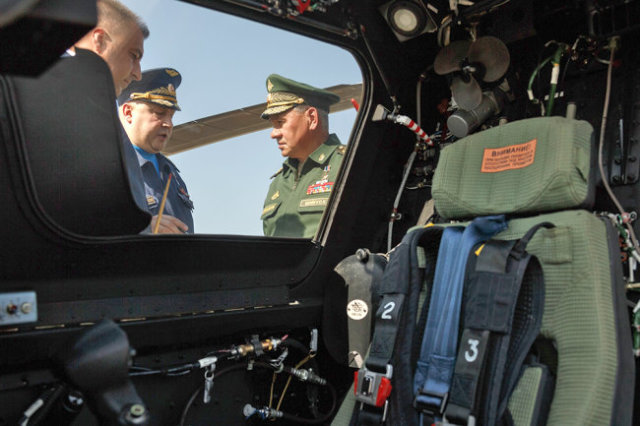Yesterday, Defense Minister Sergei Shoigu checked how the Rostov helicopter production complex is fulfilling the largest military order. By 2028, 98 new Mi-28NM attack helicopters - an updated version of the famous "Night Hunter" - are to be produced there. The state contract was concluded after a personal order of President Vladimir Putin to increase purchases of these rotorcraft.
The appearance of the improved "night hunters" differs significantly from the basic version of the helicopter. A new complex of avionics and advanced types of weapons was installed on the Mi-28NM. Thus, the Chrysanthemum complex with an electronic control system gives the crew the opportunity to hit tanks with armor up to 1200 mm at a distance of up to 6 kilometers. A missile with a range of up to 25 kilometers was also developed for the Mi-28NM. In short, the helicopter turned out to be powerful, and now it is important that such machines appear faster in the troops.
One of the regiments of the 150th Motorized Rifle Division is stationed in Rostov-on-Don. The minister was interested not only in the combat readiness of the unit, but also in the social and household infrastructure. To evaluate it, Shoigu went to the dining room, which serves soldiers on the principle of a "buffet". There, the governor of the Rostov region, Vasily Golubev, noted: his region is collecting record grain harvests. "I am very happy for you. But why is there only one bagel on the festive table?" Shoigu reacted. The governor promised to correct the situation.
In its own way, Shoigu's trip to the Sambek Heights museum complex turned out to be significant. Its expositions use information about front-line soldiers-natives of the Rostov region, obtained from the base of the Moscow region museum "The Road of Memory", created on the initiative of Shoigu. As there, visitors to the "Sambek Heights" can also find information about their relatives who fought for their Homeland.
When the minister and the governor approached the Battle Flags of the units that liberated the Rostov land from the Nazis, it turned out that these were not originals, but copies of the banners. "We need to work in the storerooms of the Museum of the Armed Forces, find real banners and transfer the relics to the Sambek Heights museum complex," Shoigu immediately ordered.
Yuri Gavrilov

